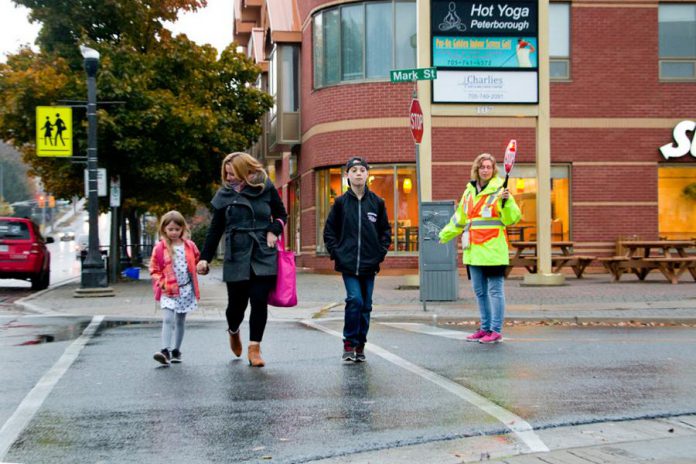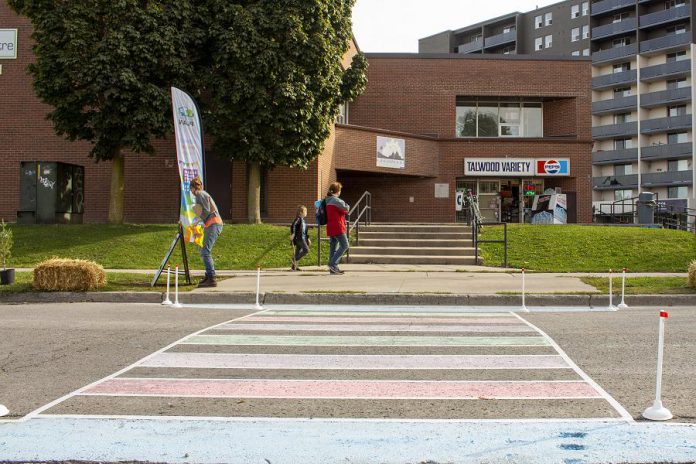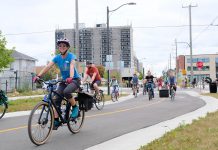
With schools online, and many people working from home, it may seem odd to imagine what life was like when you commuted to and from work, perhaps with a stop at the school to drop off the kids.
Imagine being able to walk your kids to school or daycare, commute to work, enjoy recreational opportunities, and be able to pick up what you need from the store. Imagine being able to do all that while always being within a 15-minute walk or bike ride from your residence.
This might seem like a fantasy, but there is a growing interest in the 15-minute city urban planning concept. This concept offers many ideas that can be extrapolated to various situations, supporting active transportation and the livability of our own community.
The 15-minute city concept, popularized by Carlos Moreno, designs cities with a neighbourhood approach, where residents are in close proximity to essentials — for living, working, commerce, health care, education, and entertainment. Interest in this concept is growing in response to the climate crisis and the impact of the COVID-19 pandemic.
Planners throughout the world have suggested various travel times, but the basic concept is the same. More sustainable and convenient cities, where there is less reliance on vehicles and more emphasis on residents’ well-being.
Before the pandemic, it was common for large numbers of people to commute, often long distances, to an urban core for work or to access essentials like health care or commerce. This commuting culture was disrupted due to COVID-19 restrictions in 2020, with a result of global CO2 emissions decreasing by 17 per cent compared to the previous year’s levels.
VIDEO: The 15-minute city
There is clearly an environmental benefit to reducing commutes and strengthening active transportation opportunities.
COVID-19 restrictions have forced many people to spend most of their time at or near home. Working, resting, and playing within their own neighbourhoods has allowed some people to take a deeper look at how their neighbourhood works for them. These people are recognizing the lifestyle potential of having everything you need within reach: less time spent commuting in a vehicle and more time to enjoy everyday routines.
During COVID-19, cities around the world have seen an increase in the use of bikes. The World Resources Institute suggests “this trend is a unique opportunity to embrace cycling as an integral part of urban transport systems — not just as an accessory. Cities need more resilient, more equitable mobility — not only to weather the current storm, but to prepare for future crises.”
Proximity to schools and work alone does not guarantee that a parent’s workday will start by walking or wheeling their kids to school and continuing on their way to work, etc. When Active School Travel Peterborough asks people why they do not walk or wheel their children to school a common response is to point out that the experience is not safe or possible in their busy schedule.
Active transportation choices are influenced by proximity and safety infrastructure. People need to be able to travel safely and comfortably.
Cities must also be designed in ways that are accessible for people living with disabilities or mobility restrictions. In 2021, the Centre For Active Transportation released a report suggesting the 15-minute city concept needs to be partnered with the ‘complete streets’ policy and design tools.

Complete streets are designed to be safe and inviting for all road users, incorporating design and infrastructure that supports walking, cycling, and vehicle users of all ages, abilities, and needs. When the built environment supports safe walking and wheeling in ways that are inclusive and accessible for all individuals, there is also a positive influence on the rates of active school travel.
In addition to prioritizing accessibility, concepts like the 15-minute city also need to reduce inequalities for marginalized and racialized communities. For example, Jay Pitter, an award-winning placemaker, has critiqued the 15-minute city concept for potentially contributing to urban inequality that could further alienate marginalized communities.
An equity lens needs to be applied to future development concentrating investments in the areas of our city where essential services and supportive infrastructure are most needed, and helping to ensure that all residents can experience the benefit of a safe, complete, and walkable neighbourhood.
Success in these approaches must include a hyper-local planning process that addresses concerns about accessibility, social justice, and environmental justice. Empowered communities and individuals to engaging in ground-up planning can drive solutions and growth that meet the needs and supports the existing community..
Here in Peterborough, GreenUP recognizes the power of engaging communities in the planning process. Programs like NeighbourPLAN and Student Travel Planning facilitate participatory planning activities to empower, educate, and engage communities in the planning of their own neighbourhoods.
Now imagine the proximity convenience of a 15-minute city concept with the safety and comfort of a complete street design. Imagine living in a community that was shaped by ground-up planning that addresses local issues and needs. Imagine living in a community that allows people to enjoy the benefits of active transportation for their health, the environment, and the community.
VIDEO: How do we respond to anti-Black racism in urbanist practices and conversations?


























